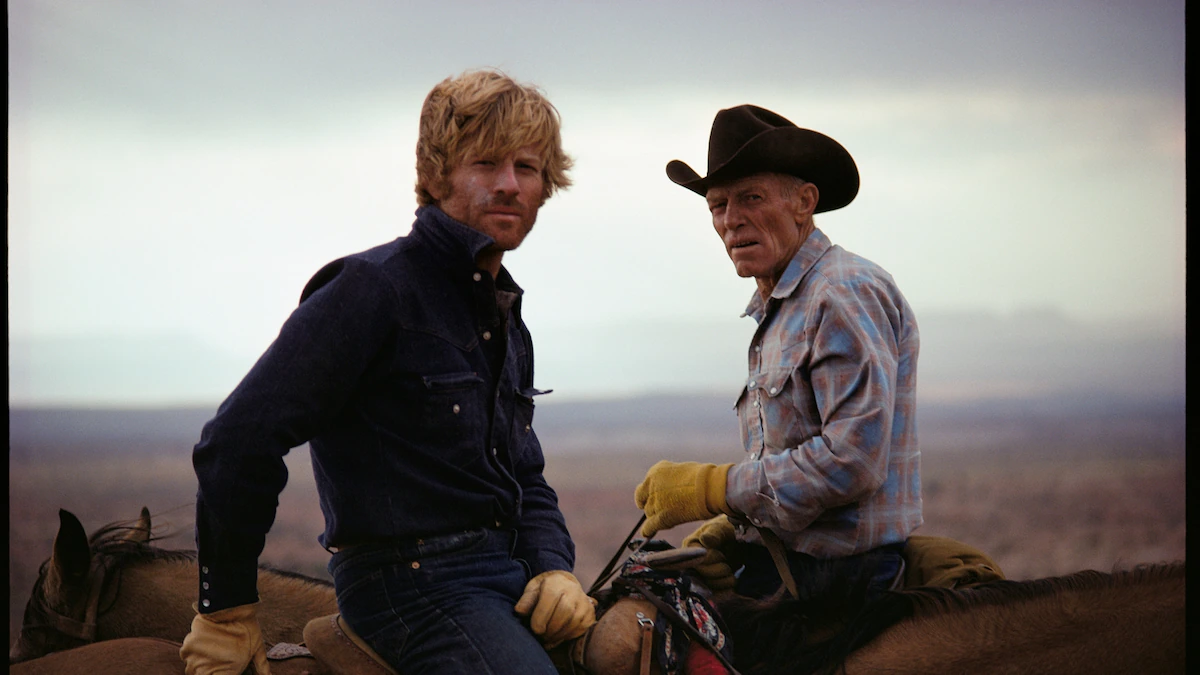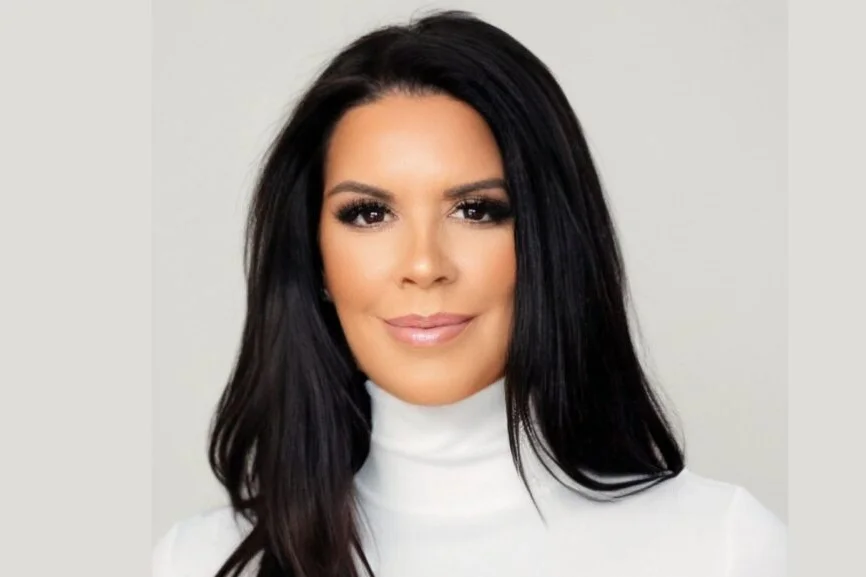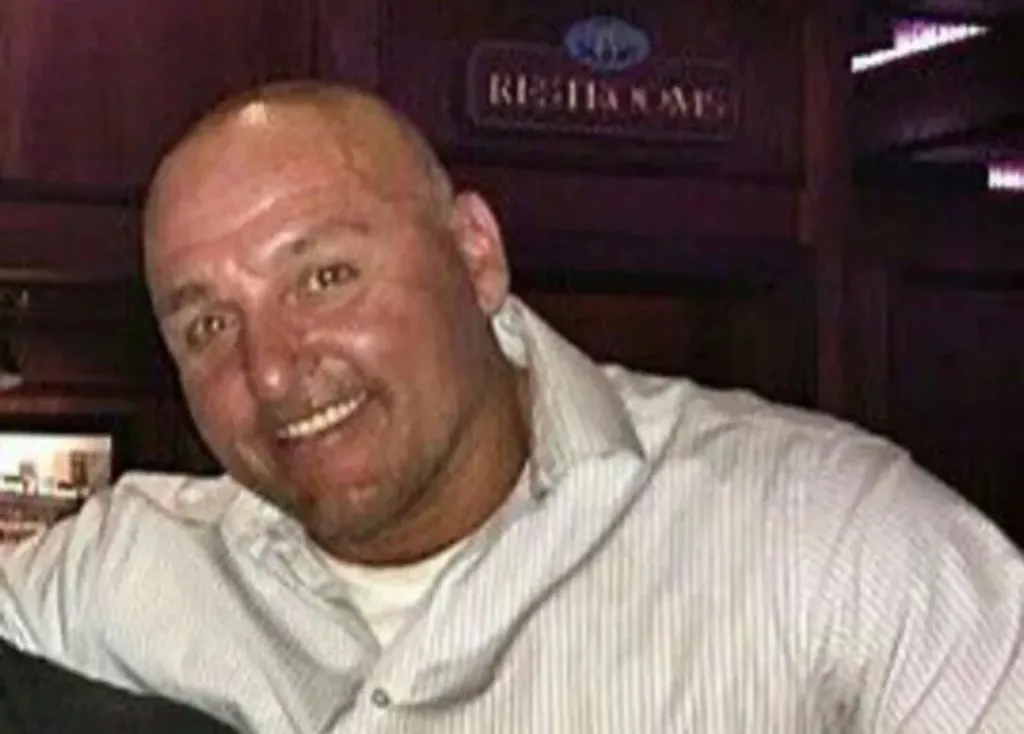
This cover story originally published in the November 1976 issue of National Geographic magazine.
I rode hard to reach the campsite near Hole-in-the-Wall before dark. After an intense year of filming All the President’s Men, it felt good to shake the city dust from my bones. On a distant ridge a few aspens still struggled to hold their awesome yellows against oncoming winter, and the October wind stung me into an alertness I hadn’t felt for months.
Hole-in-the-Wall, for years a notorious refuge for rustlers, killers, and thieves, is a narrow notch in the great Red Wall of central Wyoming. When I reined up, others were already camped in the dry, sloping valley below, milling around a fire; young faces and old, some weathered by the elements under sweat-stained stetsons curled to the owners’ liking.
From this rendezvous we would set out to retrace a major, 600-mile segment of a historic, rugged route—often glorified, in places still mysterious or long erased—known as the Outlaw Trail.
As technology thrusts us relentlessly into the future, I find myself, perversely, more interested in the past. We seem to have lost something—something vital, something of individuality and passion. That may be why we tend to view the western outlaw, rightly or not, as a romantic figure. I know I’m guilty of it, and for years I have been fascinated by that part of the West that offered sanctuary and escape routes to hundreds of colorful, lawless men.
The Outlaw Trail actually ran from northern Montana to Mexico. It had dozens of offshoots, but the main stem wound from Montana south and across Wyoming, through Utah and part of Colorado to Arizona and New Mexico, southeast toward Texas and the Mexican border.
For some forty years, beginning about 1870, it was a lawless area where a man with a past or price on his head was free to roam nameless. But he had to be good with a gun, fast on a horse, and cleverer than the next. On this trail no holds were barred, and old age was a freak condition.
50% OFF
Starting at $17/yr
I had heard tales of what survives in this country, forgotten or buried by time: old graves, cabins, caves, saloons, whole towns now untended. I’d heard stories of the outlaw bands and notorious men who rode the trail: the Red Sash gang, Butch Cassidy and the Sundance Kid, Jesse and Frank James, the McCarty brothers, Matt Warner, Big Nose George Parrott, Nate Champion, Tom Horn, and many others.
A grizzled old cowhand rode into camp looking as though he had consumed an entire distillery. His name was Tex, and he tends cows for the Taylors. He had tangled with a bank clerk in San Antonio in 1927, I was told, and fled to Hole-in-the-Wall. He’d been in the area ever since.
A bottle made the rounds. Everyone was mellowed out now, the fire, the food, and the drink a settling force. The talk turned to more serious matters.
Curt Taylor seemed to be the spokesman for the group, and he was worried about the future: “What’s happening to the rancher in this area? Ranchers are one of the smallest minorities there is—damned few and gettin’ fewer. I’d make more money if I sold and lived on the interest.”
“Why don’t you?”
“Nothin’ short of foreclosin’ would pry me out. I love the land, I love this place. It has a fabulous history. I guess we feel part of it, me and my dad.”
Someone was cooking eggs. Tex: “The chicken is the only thing we eat before it’s born and after it’s dead. …”
After breakfast Garvin led the ride up the sloping valley to the actual Hole-in-the-Wall—the V-shaped opening at the top of the red-stone escarpment, barely wide enough for a horse. There, two men with Winchesters could stand off an army.
On the way we saw virtually nothing of the old outlaw “ranch”—once a few crude log huts, tents, a saloon—in which rustlers and other outlaws gathered in the past century.
There was good grass here to fatten stolen cattle and horses. Garvin pointed to a spot on the trail where a rustler was shot by a group of cattlemen.
I asked about the famous Johnson County War. In April 1892, Cheyenne cattle barons imported a gang of 20 gunfighters from Texas to clean out this part of Wyoming of rustlers and small cattlemen alike. But the “invaders” were held to a stalemate. It took the U.S. Cavalry to rescue them from a countersiege by a force of irate settlers and outlaws.
I had read a film script that told of at least a hundred people shot in the war. “That’s a lot of puckie,” Garvin said. “Only four was killed. Nate Champion and Nick Ray was ambushed in a cabin right over there.” He pointed to a distant flat. “One guy shot himself in the foot and got gangrene. Another died from something else. But hell, there was more people shot in a poker game in Gillette.”
The climb up the wall to the niche, or hole, was steep and a little dangerous over the loose rubble. The rest of us dismounted and led our horses the last third of the way, but Garvin rode right to the top. A horse can sense when a real horseman is in the saddle. Garvin’s horse knew. He never balked.
As we rode across the flats stretching endlessly toward a gray-black horizon, I put up my collar and turned down my hat against the chill wind. Garvin rode gloveless, with only a denim jacket to protect him.
From a mesa we surveyed the Middle Fork Powder River Valley far below—now threatened by development.
“Water is a very big issue here,” said Curt.
“Oil interests want to build a dam, flood this valley, and send water 75 miles away to Gillette for coal-gasification plants. They’d get more than two-thirds of the water; the rest would be used for irrigation. But the dam would bring more and more people, and Hole-in-the-Wall, as we know it, would be a thing of the past.”
He was bitter as he spoke. There is something unhappy here, I thought, something unsettling—a fear that a way of life is dying, and with it, a certain dignity.
We went on to the Blue Creek Ranch to meet Mrs. Ethel R. Taylor, Garvin’s mother, a sweet, spirited woman in her 80s. You could immediately sense in her a pioneer spirit—a tough, durable sensibility.
“Many people from around here come from outlaw backgrounds,” she said. “Sometimes they leave mysteriously … we don’t ever ask why … we’re proud of it.”
When we said our goodbyes, I thought Mrs. Taylor had the strongest handshake.
No Seashore in Atlantic City
Our trail took us to Shoshoni, Riverton, Thermopolis, and finally to Lander, at the foot of the beautiful Wind River Range. Around here, early in his outlaw career, Butch Cassidy had passed himself off as a horse dealer; some noticed, however, that he was always selling, never buying. Kerry Boren, our historian, said Cassidy was supposed to have cached $30,000 in these mountains.
Just outside Lander on the climb to the Continental Divide is the small, all-but-forgotten settlement of Atlantic City, an old gold-mining town. A dirt road led us into a cup of a valley where, to our amazement and joy, nothing seemed to have changed for nearly a century. A few tiny cabins stood like wooden sentries against stark brown-and-white slopes.
A few dozen people live hereabouts, but there is only one hub of activity in Atlantic City—the Mercantile, a combination bar and general store. We walked up its worn steps and were instantly cast back in time: potbellied stove, photographs of suspendered store clerks with high collars and mustaches and cowboys with fresh haircuts that left the ears naked and the scalp pale around them, staring wide-eyed into the camera.
Here Terry Minger was waiting to join our party. Beer in hand, he introduced us to Terry Wehrman, who tends bar and acts as city councilman, mailman, cook, father confessor, and keeper of goodwill in Atlantic City. He is one of many young men and women who are striking out on their own.
Terry Wehrman, a transplant from Iowa, is shy, gentle, and openhearted. “I’m worried about the developing interests, sure,” he said. “The Anaconda Company, for instance, took out leases on some of the old gold mines and staked for other minerals as well. U.S. Steel has a mine here for iron ore.
“If the development gets too great, I’ll relocate. I’m hoping it doesn’t. You see, the good thing about Atlantic City is that it’s a ghost town and no one wants it. But it has attracted some good people—young ones who don’t want to work for anybody else but are willing to build something for themselves.”
Listeners Always Welcome at the Bar
Not all were young newcomers. Over at the bar, in Pendleton shirt, suspenders, and straw hat, was an old-timer named Larry Roupe. I asked if I could buy him a beer. He squinted at me and said, “Who the hell are you?” He sounded like a frog with laryngitis.
I told him I was just passing through the area and wanted to know more of its history.
“Sure, you can buy me one.” I wanted to listen; that was enough for him.
“I came from Oregon in 1922 on the Emigrant Trail,” Larry said. “My dad was a cattle buyer—he’d go down to Texas, buy steers for two dollars a head, then bring them up to Wyoming and sell them.
“I was just a kid then, but I loved this country. I ran cattle for a while, then took to rodeoin’.”
“Well, there was gold here, and it was easy to rob stagecoaches and trains then … they’d jump them trains when they was slowed goin’ up a grade, then they’d hold ’em up.”
He sipped his beer. “I could tell you lotsa things about this country—like the ‘big die-up.’ That was the big blizzard in ’86-’87— froze damn near everyone here. Some of the old-timers said you could walk across the State of Kansas into Colorado just steppin’ on one dead animal after another. Monty Blevins, he’s been dead for years, he had 18,000 head of cattle and lost ’em all. Lost two cowboys too, froze to death sittin’ in the saddle up on Sand Creek Pass.”
I asked what he knew about Tom Horn, one of the most mysterious and fascinating characters in western history.
“Well, he was a bounty hunter, hired by them big cattle barons to get rid of rustlers.”
Horn moved in secret and alone. His past and true story to this day are, at best, shadowy. He died on the gallows in Cheyenne in 1903, accused of murdering a 14-year-old boy.
We walked silently through the old general store, post office, jail, saloon. At the old bar, one could almost hear the faint calliope of voices, music, poker chips, breaking glass. Then the hotel, with hallways barely wide enough to walk through. And the jail cells: small, dark, claustrophobic—I couldn’t conceive of spending five minutes in one.
Violence Begets Violence Among Outlaws
Among the jail’s former occupants, Kerry told us, was Jesse Ewing, a hardcase outlaw who had been clawed so badly by a grizzly bear that he was nicknamed the “Ugliest Man in South Pass,” and Isom Dart, a black rustler and horse trainer for outlaws.
Ewing didn’t take to sharing a cell with a black and forced Dart to kneel while he used his back as a table. Isom, it seems, consented because he feared he’d be lynched were he to abuse the white man. The score was settled later when a friend of Dart’s blew Ewing’s head off. And, in keeping with those violent times, Dart himself was shot from ambush by the mysterious Tom Horn as the black man stepped from his cabin near Browns Park.
Next morning we moved deeper into the park, riding on the cliffs that border the Green River about ten miles below the old Jarvie ranch. It was tough going, and one false move would have pitched horse and rider several hundred feet below to the river.
A long sweep through a grazing valley once used by outlaws and we were winding back to the east, passing below the foot of Diamond Mountain and Cassidy Point. Kerry told us that originally there had been a cabin on the point, concealed beneath an overhanging ledge but commanding a view of the park for miles in all directions. All that remains at the cabin site now is a large trench in which the men proposed to make a last stand if surrounded. It was supposedly here and at the Powder Springs hideout that Cassidy made plans for the “Train Robbers Syndicate,” including such Wild Bunch members as William Ellsworth (Elzy) Lay, Kid Curry, and the Sundance Kid. Between 1899 and 1901 they robbed three trains in Wyoming and Montana, though the safe of one express car yielded only $50.40.
We rode down into a flat area near the river, where we saw the remains of an old cabin and a springhouse. This, said Kerry, was old Doc Parsons’ place. Doc died in 1881 and is buried nearby. Matt Warner lived in the cabin for a while, as did Butch Cassidy, Elzy Lay, and other outlaws.
In 1972, just as valley residents expected the Utah Division of Wildlife Resources to raze the cabin, Kerry, Marie Allen, and others succeeded in getting it placed on the state register of historic sites. Other places probably won’t be so fortunate.
I looked back toward Diamond Mountain and the Parsons cabin, and wondered what would happen to the people who were left here. Much of this land is under a government jurisdiction that seems uninterested in memory or legends. Ranchers have been forced to sell under threats of condemnation.
Incredibly, Ed Abbey and the others arrived at Little Hole at the same moment. By the time we had forded the river, finished dinner, and settled down, the moon had come up, full and bright.
A beautiful morning, and a perfect place for an outlaw stronghold. A cabin survives here, that of Tom Crowley, who used to bootleg whiskey to the Indians. Built in 1869 with stolen railroad ties, it has seen many occupants over the past century. An outlaw named Mexican Charlie was shot here for cheating at cards; he lies buried a few yards away.
Crowley’s place now stands in danger of destruction through indifference and increasing development.
History Inundated by Progress
We headed for Vernal, Utah, where outlaws on the run often obtained fresh horses. The four-wheel drive took us along the edge of Flaming Gorge, where many cabins, homesteads, caves, and grave sites were drowned when the Green River was dammed to create this vast reservoir and recreation area.
In the distance the Colorado Plateau stretched across the horizon, lean and graceful, encompassing incredible space in perfect harmony with the sky. It rankled to imagine the plans for oil shale and other development that will certainly determine its fate.
Down along the parched, desolate Nine Mile Canyon we came across a pleasant stretch of green-again part of the old trail often used by the outlaws.
I stopped to talk to a leathery, squint-eyed rancher repairing a tractor in a field. I was unprepared for the hostility in his replies.
“How long have I been here? Too damn long.”
“It’s very beautiful,” I offered.
“Yeah? Well, you can have it. You want to take those cows out there off my hands, you got it. This is a hole—a hellhole. Ain’t nothin’ but dust and rocks and some starvin’ cows. Let me outta here and up to Minnesota. That’s the only place left where a man can make a livin’ farmin’ or ranchin’.”
“What’s wrong around here?” I asked.
“No one cares about it. No water. No one has the money to develop it for ranchin’. All anybody’s interested in is buyin’ up mineral rights for power development and real estate. We’re gettin’ starved out.”
As we rode on, I thought that this was the real plight of the ranchers in the area. They often don’t see the beauty of their surroundings because they feel economically blocked by the same surroundings and therefore resent them.
Rugged Canyonlands Discouraged Lawmen
At Green River we met A.C. Ekker, who runs an outfitting and guide service called Outlaw Trails. A.C. is a hardworking, hard-riding ex-rodeo cowboy who suggests, more than anyone I’ve come across, the verve, strength, and enterprising spirit of the early settlers. In a shrinking society of worn leather and tired spirits, he stands out.
He welcomed us with the friendly but wary eye of one who suspects a tenderfoot and led us to the Ekker homestead, some eighty miles south. There, in a stucco ranch house, we met his father, Arthur, who has ranched the Roost country for almost 40 years. At 65, Arthur is crusty but energetic, with eyes almost hidden in the folds of a squint. As he told us of this region, he spoke in bursts of exclamations, as if he had dozed off between thoughts and didn’t want to get caught at it.
Robbers Roost was the last of the three big way stations along the Outlaw Trail. Unlike the others, it was not a secluded valley, but a dry, rugged, thirty-mile-wide plateau sliced by formidable canyons, with lookout points on all sides. This was desolate country. Isolated from settlements by miles of desert, it was almost inaccessible except to the few who knew the route. The outlaws knew where vital springs were and could survive there.
“Yep, ol’ Butch was the best,” A.C. said as he pried away at his mouth with a tooth pick. “Plenty popular in these parts. Him and Matt Warner and the McCartys used to bring in stolen horses from western Utah. No one could follow ’em—too tough. When the coast was clear, they’d move ’em on to Colorado.”
“They used to live in sandstone caves or in crude cabins of twisted cedar,” Kerry Boren chimed in.
Butch was always leaving something for the ranchers, taking care of them for their help and always keeping his word. In unspoken agreement, the ranchers never talked about seeing him. The rule of word—if you broke it, then what? “Well,” said A.C., “then someone would show up and put a bullet in you to square the deal.”
It snowed that night. In the morning we shook several inches from our sleeping bags and headed out into a cold mist for the outlaw stronghold on the edge of Roost Flats. As we rode along on a carpet of fresh snow, our bones as brittle as ice shards, the gray oppressive stillness lifted. Now the air was blue and frosty with white everywhere—a true white, with color in it. It was revitalizing, like tasting mint leaf.
A. C. spotted a band of range horses, and we took out after them as if there were no other task and no tomorrow. The leader of the band was a beautiful buckskin stallion with thick neck and a tail that reached the ground. He led the others for three miles just a step ahead of us until we caught up and raced alongside. The stallion’s eyes were alert and wild. Yet I think he sensed, amidst the threat, the feeling of play to all this. After a good look we let them go, and they ran away to the south, led by this untamed Pegasus. I couldn’t deny a feeling of envy at the sight.
It was about six miles to the Roost and down into a small cut where Butch Cassidy’s hideout was.
The original corral is still here, and we put our horses in it while we ate. Afterward we circled the Roost looking at the remnants of an old outlaw society—a stone chimney, caves, and carvings.
Cassidy’s camp became the center of all activity in the region. Even people who were not considered outlaws came here to play poker and race their horses with the sporty members of the gang. It is said that Butch was the most amiable of all the western outlaws, fun loving and a gentleman with women. There is no evidence that he ever killed anyone, unless it was at his legendary final stand in 1909 at San Vicente, Bolivia.
Several women lived at the camp; they often shopped for supplies and purchased ominously large amounts of ammunition in the nearby towns of Price and Green River. Maude Davis (wife of Elzy Lay) was there, and the mysterious, beautiful Etta Place girlfriend of the Sundance Kid-was thought to be among them.
We had to jog along at a good clip to get to camp before dark. We had traveled close to twenty miles for the day. Men used to ride like this most of the time, harder and longer, over even rougher terrain, because they had to.
Did Arthur Ekker remember those times? “Sure, when I was a kid, a horse was the only way you could get around. Steal a horse and you was a marked man-like takin’ a man’s gun away from him. But you could find wild herds all over these flats. Hardly any left now.”
Cassidy’s Fate Still Argued
We warmed frozen appendages by the fire, beat frozen boots against rocks, drank herb tea, and listened to Arthur reminisce.
On rustling: “Used to change the old brand of a cow with a hot iron. Some of the rustlers came up from Texas—it was a fast way to get into the cattle business.”
On Butch Cassidy: “Lots of folks around these parts believe he never died in Bolivia. Fella named Hanks from over to Hanksville, who used to take supplies out here to the Roost, claimed he seen Butch in the ’20’s.”
On his youth: “First time I took this trail I was 7 or 8. In the old days people were tougher. Why, over in Hanksville they had to ride 50 miles for a doctor. By the time you got there, you was either dead or well. Undertaker did a lot of business.”
He also spoke of the future: “Robbers Roost won’t change much,” he said. “You can’t irrigate it, and there’s no coal to dig out. There’ll be livestock here as always. But the national parks are movin’ in on a lot of the ranches, and I suppose much of the land will be used for recreation.”
We headed west out of the Roost, down across Dirty Devil River past Hanksville and south to Lake Powell, created by the damming of the Colorado in 1963. The next couple of days we traveled by boat—still on the Outlaw Trail, but here its remnants were submerged. At the lower end of the lake near Page, Arizona, the dependable A. C. Ekker and one of his ranch hands were waiting for us.
Butch Cassidy Lives On in Memory
It seemed fitting that we finish our trail ride at the home in which Butch Cassidy grew up, and celebrate the journey’s end with Butch’s sister, Lula Betenson, in her 90’s now and living in the nearby town of Circleville, Utah. This would complete our story.
Lula Betenson and I had first met in 1968 when she visited the film set of Butch Cassidy and the Sundance Kid, in which I played Sundance. She struck me then as an unusual person—spry, witty, strong-willed, and with a gentle feminine spirit. Lula was one of 13 children and only a baby when Butch left home.



